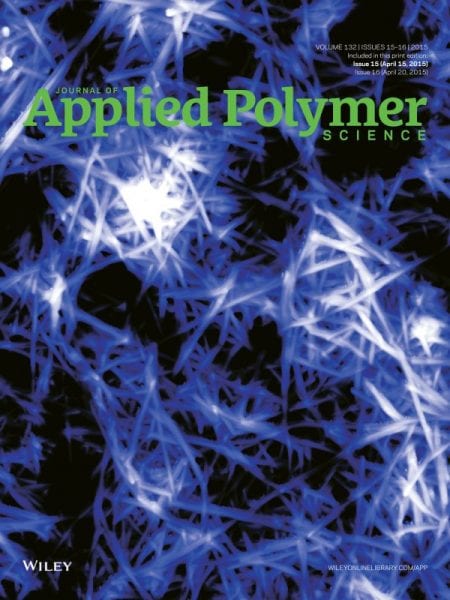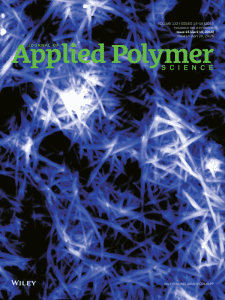If you had to design a “dream material”, what properties would it have? Surely it would need to be cheap, readily available from sustainable sources, have a low toxicity, and be biodegradable. Cellulose, it turns out, has all these features. As the most plentiful of all natural polymers, cellulose is produced from many plant, animal, and even microbial sources. Cellulose’s excellent mechanical properties, stemming largely from hydrogen bonding, also make it appealing for biomedical applications.
Studies on the biomedical applications of cellulose are increasing exponentially, with hundreds of new reports examining drug delivery, wound healing, implants, and tissue engineering. Biomedical materials based on nanostructured cellulose (nanocellulose) are also increasingly prominent. In light of this progress, two up and coming young researchers present a new review of nanocellulose’s biomedical applications in the Journal of Applied Polymer Science.
The authors are Dr. Mehdi Jorfi and Prof. E. Johan Foster. Dr. Jorfi is a biomaterials scientist at MIT and Brigham and Women’s Hospital working on projects ranging from creating dynamic 3D stem cell microenvironments to developing (micro)-nanofibers with unique functions for applications in cardiovascular disease, diabetes, wound healing, and stem cell engineering. Prof. Foster’s current research at Virginia Tech’s Department of Materials Science and Engineering Department focuses on advanced functional and supramolecular bio(nano)materials applied to areas like drug delivery, high-performance fibers, and energy applications.
Previous reviews cover the fundamental chemistry and preparation of various nanocellulose materials but a survey emphasizing their applications was conspicuously missing. Jorfi and Foster write, “as the abundance of available published articles on cellulose-based materials for biomedical applications increases, here we focus on some examples of more recently investigated advanced nanocellulose materials.” Most of the review focuses on advanced nanocellulose materials for biomedical applications and specifically on medical implants. Highlighted are recent reports covering in situ softening cortical implants, soft tissue and cartilage replacements, drug delivery systems, wound healing, tissue engineering, antibacterial/antimicrobial applications, and cardiovascular implants.
Biocompatibility, a vital property for any biomedical device, is explored in the review’s final section. Recent studies on the biocompatibility and toxicology of cellulose-based biomaterials are presented and discussed. For all of the progress made with nanocellulose for biomedical applications, Jorfi and Foster believe the field is only just beginning to take off. “We believe that there are still several areas that need to be addressed and plenty of possibilities to be explored in this topic. As materials science continues to rapidly develop in biomedical fields, nanocellulose materials may provide a solution in the future for overcoming some of the insurmountable challenges of biomedical materials.”


















